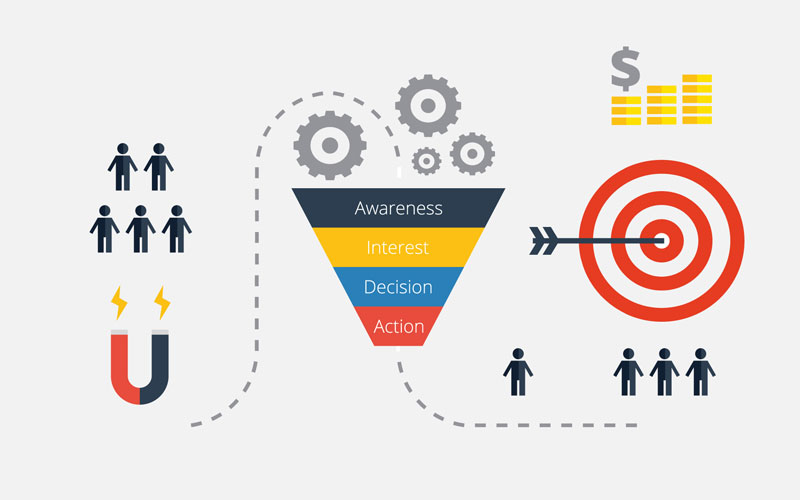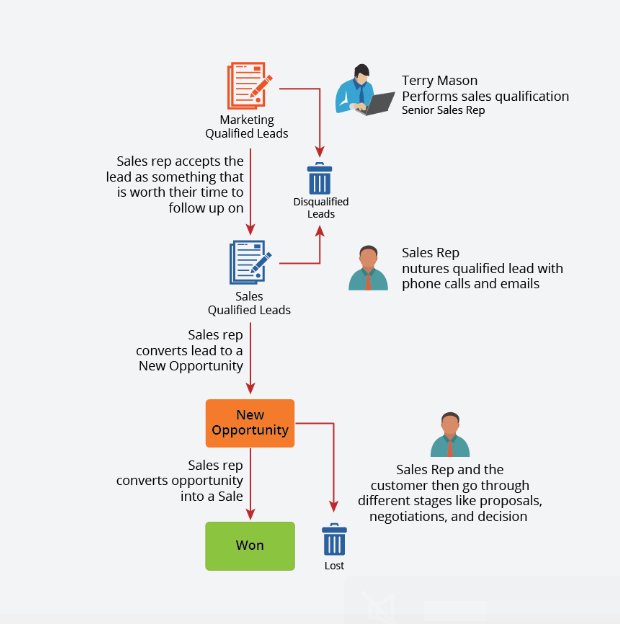What is the Difference Between Marketing and Sales?
Eric Walker
November 01, 2023
In the world of business, two crucial elements that drive success are marketing and sales. While they often work hand in hand, they perform different functions and have distinct roles. Understanding the difference between these two concepts is essential for any business to thrive.
Marketing: The Art of Attracting Attention
Marketing is often seen as the art of attracting attention. It’s about creating a narrative around a product or service that captivates audiences and inspires them to take action. The ultimate goal of marketing is to facilitate sales by generating interest and awareness. However, it’s essential to understand the difference between marketing and sales to fully comprehend the role of marketing.
The difference between marketing and sales lies in their primary focus. Marketing concentrates on developing a relationship with potential customers, understanding their needs and wants, and creating strategies that align with these needs. It’s all about shaping perceptions, building brand identity, and crafting messages that resonate with a designated target market.
Sales, on the other hand, is a more direct process. It involves person-to-person interaction with the primary goal of closing a deal. Salespeople work on converting the interest generated by marketing efforts into actual purchases. They focus on individual customers, negotiating deals, addressing objections, and ultimately, selling the product or service.
The interplay between marketing and sales is crucial for any business. Marketing sets the stage, piques interest and creates desire, while sales bring home the results by turning that desire into a commercial transaction.
But at the heart of both processes is the customer. Whether it’s through engaging ad campaigns, compelling social media content, or one-on-one interactions, both marketing and sales aim to satisfy customer needs and forge strong relationships.
List of Marketing Activities
Marketing activities are essential components of a business’s operations, aimed at promoting products or services, attracting new customers, and maintaining relationships with existing ones. Below is a comprehensive list of such activities:
- Market Research: This involves studying and understanding the target market, its needs, preferences, and behavior. It helps businesses create effective marketing strategies.
- Product Development: Based on market research, businesses develop or improve products or services to meet customer needs and stand out from the competition.
- Pricing Strategy: This involves setting competitive prices for products or services. The pricing strategy should consider factors like production costs, market conditions, and customer perception.
- Promotion: Promotional activities can range from traditional advertising and public relations to digital marketing techniques like SEO and social media marketing.
- Sales: This includes all activities related to selling the product or service, such as sales presentations, negotiations, and closing deals.
- Distribution: This involves ensuring that products or services reach the customers effectively and efficiently. It includes managing logistics, inventory, and relationships with retailers or distributors.
- Customer Service: Providing excellent customer service is a crucial marketing activity. It helps in building strong relationships with customers and enhancing customer loyalty.
- Brand Management: This involves creating and strengthening the company’s brand image. It includes activities like logo design, brand messaging, and reputation management.
- Content Marketing: This involves creating valuable content to attract, engage, and convert customers. Content marketing can include blogs, videos, infographics, and more.
- Email Marketing: This is a direct form of marketing that involves sending promotional messages to a targeted group of people via email.
- Social Media Marketing: Businesses use social media platforms to promote their brand, engage with customers, and drive traffic to their websites.
- Influencer Marketing: In this form of marketing, businesses collaborate with influencers to promote their products or services to the influencer’s followers.
Each marketing activity plays a unique role in achieving the business’s goals. By incorporating these activities into a cohesive marketing plan, companies can effectively reach their target audience and achieve their desired market position.
Sales: The Art of Closing Deals
Sales: The Art of Closing Deals is a complex and nuanced discipline that involves understanding the customer’s needs, crafting a compelling solution, and persuading the customer to make a purchase. Mastering this art is crucial for any business, as it directly affects revenue and growth.
The process of closing deals is significantly influenced by the interplay between marketing and sales. While both are essential for a company’s success, they serve different purposes. The difference between marketing and sales lies in their primary objectives and the stages of the customer journey they cover.
Marketing focuses on raising awareness about a product or service, creating interest, and generating leads. It involves strategies like market research, content creation, social media campaigns, and more. Through these efforts, marketing nurtures potential customers until they are ready to consider making a purchase.
On the other hand, sales takes over once a prospect has been identified. The sales team works on transforming these prospects into actual customers. This process requires effective communication, negotiation skills, and the ability to handle objections. The end goal is to close the deal and ensure customer satisfaction.
Understanding the difference between marketing and sales is key to mastering the art of closing deals. Sales professionals must leverage the leads generated by marketing efforts and guide those leads through the sales funnel. This requires skillful persuasion and negotiation, empathy to understand customer needs, and patience to navigate through any hurdles that may arise during the sales process.
Sales is not just about making transactions. It’s about building relationships with customers and providing solutions that meet their needs. When done right, it can lead to repeat business, referrals, and a solid reputation for your company. Therefore, mastering the art of closing deals is essential for any business aiming for sustainable growth.
List of Sales activities
Sales activities encompass a wide array of strategies and tasks used by organizations to promote their products or services and generate revenue. These activities help businesses reach out to potential customers, maintain relationships with existing clients, and ultimately drive sales.
- Prospecting: This is the process of finding and identifying potential customers for a business. It involves researching and targeting individuals or businesses that are likely to be interested in the product or service being sold.
- Lead Generation: Lead generation is about attracting potential customers and getting them interested in your business. This can be done through various methods such as content marketing, social media marketing, email marketing, SEO, and advertising.
- Sales Presentations/Demonstrations: These are conducted to showcase the benefits and features of a product or service. The objective is to convince the potential customer that the offering will solve their problem or meet their need.
- Negotiation: This activity involves discussing terms of sale with the potential customer. The salesperson aims to reach an agreement that is acceptable to both parties, which often requires flexibility and diplomacy.
- Closing the Sale: This is the final step in the sales process where the salesperson seals the deal. It requires skills such as persuasion, negotiation, and the ability to handle objections.
- Follow-up: After a sale has been made, follow-up activities are essential for maintaining customer relationships. These can include providing support, checking in on customer satisfaction, and offering new products or services.
- Customer Retention: This involves keeping existing customers satisfied with your product or service. This can be achieved through excellent customer service, loyalty programs, and regular communication.
- Sales Analysis: This involves examining data to identify trends, measure performance against targets, and make informed decisions about future sales strategies. It’s an essential part of planning and improving sales activities.
Each of these activities plays a crucial role in the overall sales process. They not only help in acquiring new customers but also ensure the retention of existing ones, contributing to a company’s long-term success.
The Interplay Between Marketing And Sales
The interplay between marketing and sales is a crucial factor that determines the success of any business. When effectively coordinated, these two domains can significantly enhance a company’s growth and profitability. A clear understanding of the difference between marketing and sales is essential to harness their combined potential effectively.
The primary difference between marketing and sales lies in their focus areas and goals. Marketing is a broader process that encompasses the identification of target markets, understanding customer needs, and creating strategies to meet those needs. It involves communicating the value proposition of a product or service to potential customers, fostering awareness and interest. It’s a long-term approach, aiming to build strong relationships with customers by meeting and exceeding their expectations.
On the other hand, sales is more focused on converting prospective customers into actual buyers. It involves direct interaction with potential customers, persuading them to purchase the product or service. Sales activities are typically shorter-term, with immediate revenue generation as the primary goal.
The interplay between marketing and sales is most effective when both teams work towards a shared objective. Marketing efforts should pave the way for successful sales by generating leads and creating a fertile ground for sales pitches. Sales teams, in turn, provide valuable feedback to marketers about customer responses, preferences, and objections, thus refining the marketing strategies.
The difference between marketing and sales should not be a cause for siloed operations but rather a reason for intensive collaboration. Aligning both functions can result in a seamless journey for customers, from brand awareness to purchase, thereby driving customer loyalty and repeat business. In essence, understanding the difference between marketing and sales and orchestrating their synergistic interplay can propel a business towards sustainable growth and success.
Better Understanding for Jobseekers
Understanding the distinction between marketing and sales is crucial for jobseekers aiming to break into these sectors. The key difference lies in their primary focus.
Marketing is a broad process that involves understanding the market requirements, creating awareness about the product or service, and developing strategies to engage potential customers. It is about communicating the value of a product or service to prospective customers with the goal of branding and attracting interest. This process includes activities like market research, advertising, product development, and distribution strategies.
On the other hand, sales is a more direct process that focuses on persuading potential customers to purchase a specific product or service. It’s about closing the deal and turning prospects into paying customers. Sales professionals interact directly with prospects, handle objections, negotiate prices, and work towards finalizing transactions.
If you are applying for Marketing Job, the question of what Sales and marketing does is something you can expect. Also understanding the organizational structure, industry you are applying for the job also plays a key role. There are many small to mid size companies where Sales and marketing are handled by a team instead of separate org units.
Conclusion
In conclusion, while both marketing and sales are crucial for any business’s success, they play different roles. Marketing is about creating awareness and generating interest in a product or service. Sales is about converting that interest into actual purchases. By understanding these differences, businesses can better allocate resources and formulate strategies that maximize both these functions.
Remember, marketing and sales are two sides of the same coin. Both aim to increase revenue but they do so in different ways. The key to success is to ensure they work together seamlessly, complementing each other’s efforts.
All Tags
